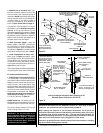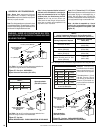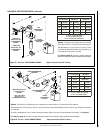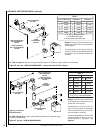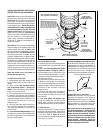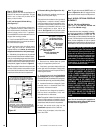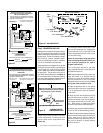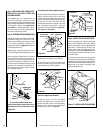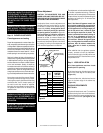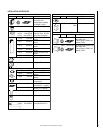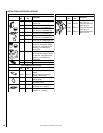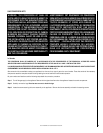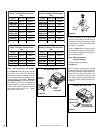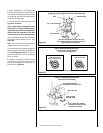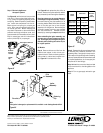
26
NOTE: DIAGRAMS & ILLUSTRATIONS NOT TO SCALE.
12 (305) MANTEL
10 (254) MANTEL
8 (203) MANTEL
6 (152) MANTEL
4 (102) MANTEL
4
(102)
14
(356)
12
(305)
10
(254)
2 (51) MANTEL
TOP OF
APPLIANCE
6
(152)
NOTE - Hood shown as positioned in louvered
front model. The hood position in the flush
faced front model is lower than shown.
8
(203)
MANTEL CLEARANCES
Inches (mm)
17"
14"
Min. Distance To
Unprotected Side Wall
8-1/4"
45°
Combustible Materials
Allowed In Shaded
Area “Safe Zone”
12"
5"
Min. Distance
To Protected
Side Wall
Top View Of
Fireplace
Side
Wall
Side
Wall
Combustible materials may project beyond
the sides of the fireplace opening as long as
they are kept within the shaded areas illus-
trated in
Figure 57
.
Figure 58
Figure 57
COLD CLIMATE INSULATION
For cold climate installations, seal all cracks around your appliance with noncombustible material
and wherever cold air could enter the room. It is especially important to insulate outside chase
cavity between studs and under floor on which appliance rests, if floor is above ground level. Gas
line holes and other openings should be caulked or stuffed with unfaced fiberglass insulation. In
cold climates, if the fireplace is being installed on a cement slab, a sheet of plywood or other raised
platform can be placed underneath to prevent conducting cold up into the room. It also helps to
sheetrock inside surfaces and tape for maximum air tightness and caulk firestops.
A hearth extension is not required with this appliance. If a hearth extension is used, do not block
the lower control compartment door. Any hearth extension used is for appearance only and does
not have to conform to standard hearth extension installation requirements.
Note: Combustible wall finish materials and/or surround materials must not be allowed to
encroach the area defined by the appliance front face (black sheet metal). Never allow
combustible materials to be positioned in front of or overlapping the appliance front face.
See Figures 55 and 56.
Non-combustible materials, such as surrounds and other appliance trim, may be installed on the
appliance front face with these exceptions: they must not cover any portion of the glass or
louvers; they may cover any portion of the top radiant panel or the air gaps surrounding the top
radiant panel up to the installed hood.
Vertical installation clearances to combustible mantels vary according to the depth of the
mantel. See
Figure 58
. Mantels constructed of non-combustible materials may be installed at
any height above the appliance opening; however, do not allow anything to hang below the hood.
Combustible
Finished Wall
Materials
This Area Must Remain
Clear of Combustible
Materials
Top of Appliance
1" Min
(25 mm)
Spacer
Louver Face Models
Top of Door Frame
Combustible
material
may touch the
appliance top.
Hood must be installed as shown.
Louvers
Combustible
materials not
allowed below
this point on
the face of the
appliance.
Figure 56
Figure 55
Combustible
Finished Wall
Materials
This Area Must Remain
Clear of Combustible
Materials
Top of Appliance
1" Min
(25 mm)
Spacer
Clean Face Models
Top of Door Frame
Hood must be installed as shown.
Radiant panel
Combustible
material
may touch the
appliance top.
Combustible
materials not
allowed below
this point on
the face of the
appliance.



